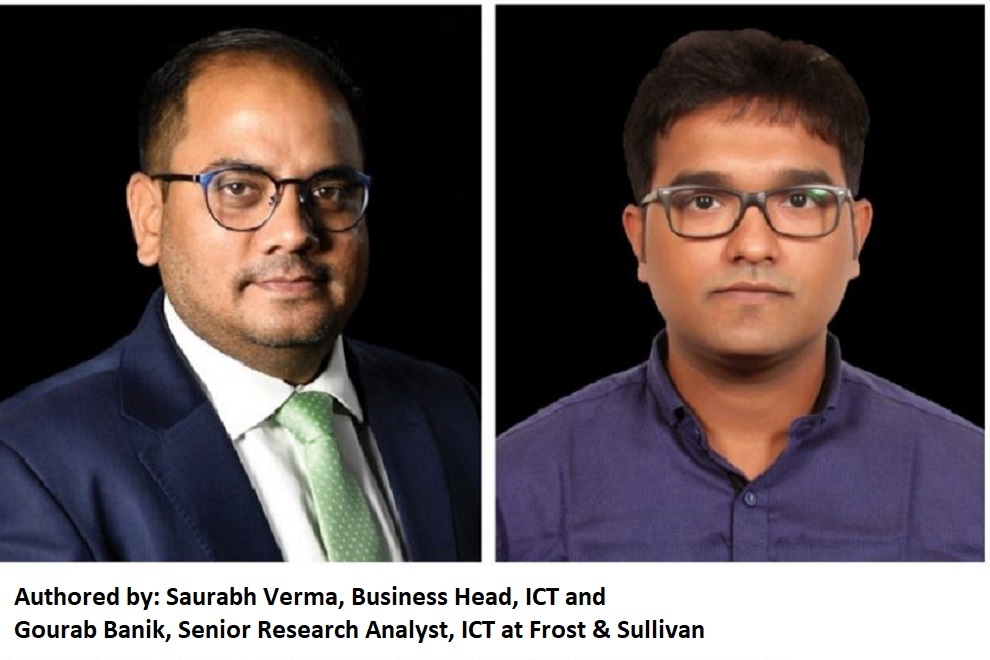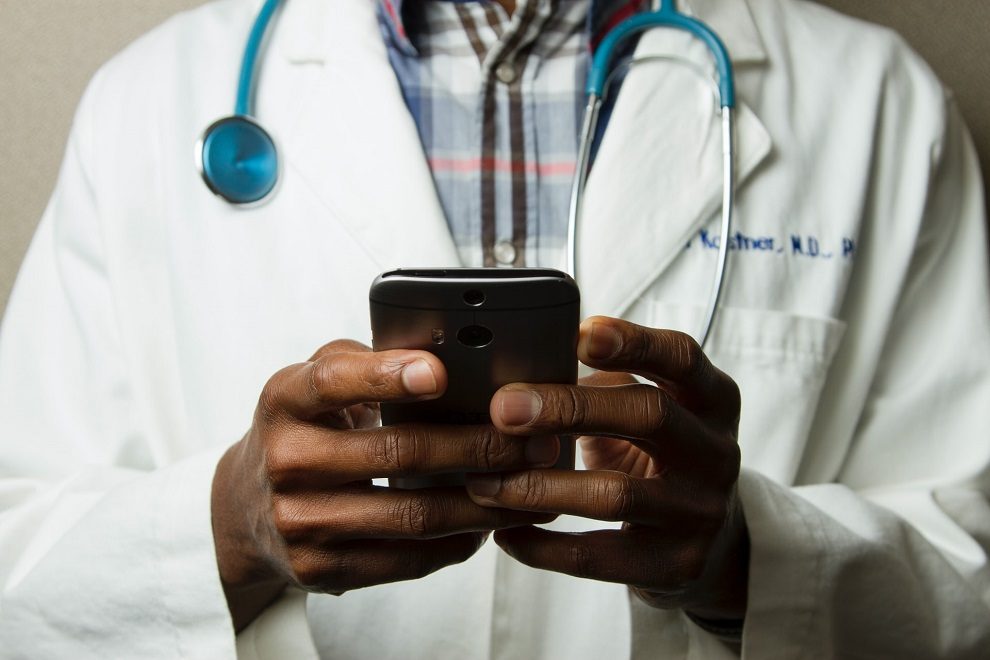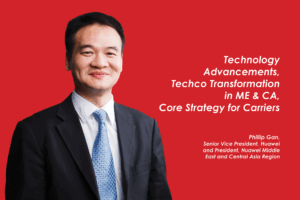 The highly contagious virus – COVID-19 has spread rapidly across the globe. Measures like lockdown and social distancing were implemented to contain its spread, which significantly impacted the social and economic aspects of many countries. It massively disrupted the conventional ways of operations and pushed industries to realign their strategies and formulate new delivery models for business continuity. Fighting against the contagion, the healthcare industry has taken the center stage since the beginning of the outbreak. However, the crisis has revealed several flaws within the existing healthcare systems, especially regarding their preparedness to tackle the scale of COVID-19’s impact. Almost every healthcare facility globally has been exposed to the problem related to high influx of patients amid insufficient availability of healthcare – infrastructure, services, and personals. However, a silver lining to the ongoing crisis is the accelerated shift towards digital transformation of the healthcare systems with more emphasis on remote care, prevention of future health crisis, and utilization of innovative technologies.
The highly contagious virus – COVID-19 has spread rapidly across the globe. Measures like lockdown and social distancing were implemented to contain its spread, which significantly impacted the social and economic aspects of many countries. It massively disrupted the conventional ways of operations and pushed industries to realign their strategies and formulate new delivery models for business continuity. Fighting against the contagion, the healthcare industry has taken the center stage since the beginning of the outbreak. However, the crisis has revealed several flaws within the existing healthcare systems, especially regarding their preparedness to tackle the scale of COVID-19’s impact. Almost every healthcare facility globally has been exposed to the problem related to high influx of patients amid insufficient availability of healthcare – infrastructure, services, and personals. However, a silver lining to the ongoing crisis is the accelerated shift towards digital transformation of the healthcare systems with more emphasis on remote care, prevention of future health crisis, and utilization of innovative technologies.
Digital transformation of Healthcare systems:
Even though technologies like tele-health have existed for a long time, healthcare systems relied mostly on conventional in-person interactions between patients and healthcare personals. However, to comply with the social distancing norms, primary medical care has been pushed towards technology-powered remote options rapidly. Moreover, traditional healthcare systems lacked data analytics and intelligent reporting. Nevertheless, improved digitalization trigged by the pandemic is leading to better collection of patient data. Leveraging big-data analytics; this vast healthcare data volume can be analyzed for improving treatment processes and also for mitigating future pandemics through model-based prediction. Moreover, the healthcare systems are witnessing an increasing adoption of sensors and wearable technologies; aiding remote monitoring and reporting of health conditions of infected patients. These advancements are expeditiously transforming the healthcare sector into a smart and intuitive ecosystem with more focus on preventing future pandemic outbreaks. Meanwhile, introduction of 5G is further revolutionizing the healthcare sector by not only enhancing the existing use cases like tele-health but also empowering more advanced applications like medical robotics.
Advantage of 5G:
Improved bandwidth alone is not 5G’s only major upgrade over its predecessor cellular communication network – 4G LTE. The 5G network also features ultra-reliable low latency, high connection density, enhanced security, and power efficiency. With increasing digitalization of healthcare systems and mounting demand for remote and HD-video based medical treatment, data volume has increased rapidly over the recent past. As a result, it is becoming increasingly difficult to seamlessly transfer huge amount of healthcare data over existing network infrastructures. While 4G network is capable of meeting the basic data transmission requirements, there is a substantial need for upgrading the network with more bandwidth and reliable connectivity to support the advanced digital healthcare services. 5G boasts better data transfer rates along with reduced latency facilitating – rapid transfer of large digital healthcare data like diagnostic imaging and video files, and real-time communication for remote healthcare services.
5G use cases in Healthcare:
5G is playing a significant role in enhancing the efficacy of healthcare treatment and pandemic prevention methods. While the possibilities are boundless; remote consultation, big-data analytics, VR/AR applications, medical robotics, infrared cameras, and connected ambulance are the key use cases of 5G in healthcare:
- Tele-health: The rampant spread of the virus has overwhelmed the conventional healthcare systems globally and accelerated the adoption of remote care or tele-health services. Tele-health minimized direct physical contact between patients and healthcare personals, and provided access of medical services especially in remote areas. Moreover, it helped in remote monitoring of patients with chronic illness or condition, ensuring they stayed away from hospitals and thus minimizing their chances of COVID-19 infection. As tele-health services especially medical consultation through real time video conferencing and image transmission requires a lot of bandwidth, 5G networks is capable of providing a near-instantaneous data connectivity services. The low latency and large connection density provided by 5G is massively impacting all connected devices in healthcare, facilitating seamless interactions and rapid transfer of diagnostic information.
- Thermal imaging: For combating the spread of the epidemic, it is very important to detect COVID-19 symptoms such as elevated body temperatures as well as to monitor public contact history. In this regard, both governments and industries are increasingly deploying automated thermal imaging and temperature monitoring systems in high-footfall areas like hospitals, shopping centers etc. These systems are powered with high-resolution infrared radiation (IR) cameras for detecting individuals with elevated body temperatures without contact and generating alarms in real-time. The thermal video images generate by these cameras are transmitted to monitoring centers for analysis and processing. 4G networks do not have the capacity to fully support the requirement of continuous transfer of large volumes of HD images generated via thermal imaging. Through 5G networks, the data collected by these cameras can be transferred seamlessly to central monitoring centers and also can be uploaded to the cloud in real time without any delay. 5G coupled with artificial intelligence (AI) and big-data analytics can further improve the accuracy and efficiency of public temperature monitoring and crowd movement tracking.
- Robotics: The pandemic has raised interest in medical robots with hospitals increasingly looking to use them for ensuring safety and reducing the workload of medical personals. Medical robots are capable of undertaking routine tasks like cleaning and sanitation, supplying food and medicine delivery; improving the efficiency and safety of quarantine facilities. This provides medical staffs with more time in hand to perform other essential tasks such as tending to critical cases. In addition, medical robots embedded with sensors and equipment like cameras can perform several tasks, ranging from measuring patient’s body temperature to robotic surgical procedures. These surgical robots require high computational power to process imagery from cameras and other sensor data. Moreover, the emerging cloud robotics technology is enabling the maintenance of system intelligence in the cloud and more simplified robotic hardware in the ground. The speed and reliability of the exchange of information is crucial for effective operation of cloud robotics. 5G will play a key enabling role for next generation medical robots to function wirelessly and provide seamless access to cloud computing.
- Virtual and Augmented reality: Virtual reality (VR) and augmented reality (AR) technologies in the healthcare space are mainly used to provide training to medical workers. These technologies are facilitating better visualization of patient data, further helping in advanced diagnostics like image-guided surgery. Moreover, the growing availability of VR/AR headsets and smart glasses is accelerating adoption and also opening up new opportunities for VR/AR in the healthcare industry. There is a huge potential for 5G to improve many aspects of VR/AR in healthcare like medical imaging, where high-speed 5G networks will enable fast and reliable transport of large data files. Also, low latency of 5G network is ensuring robust connectivity for VR/AR based remote consultations and patient monitoring services.
- Connected ambulance: A connected ambulance facilitates live measurement of patient data through wearables, sensors, and body mounted HD video camera streaming, while transferring the patient to the hospital. These ambulances are also equipped with ultrasound technology for the doctor to perform scans remotely. Adoption of this technology can facilitate better coordination between paramedics and hospital emergency department, and thus improve the efficacy and efficiency during emergency medical situations. 5G, along with network slicing, can provide a dedicated connectivity for critical communication requirements of connected ambulance. It can also empower vehicle-to-vehicle (V2V) and vehicle-to-infrastructure (V2I) communication and help connected ambulances to move through traffic and reach the hospital more efficiently.
Opportunity for telecom operators:
5G is accelerating new revenue models for operators by driving advancement in areas like tele-health, healthcare cloud computing, and more. It is also empowering more advanced healthcare applications like robotic surgery and connected ambulance. Moreover, accelerated digital transformation of the sector is providing telecom operators with the opportunity to offer services beyond connectivity and provide end-to-end solutions to healthcare providers. 5G network leveraging network slicing techniques has the capability to create virtual campus networks (VCN). Totally isolated spectrum frequency of 5G VCN is capable of ensuring maximum device interconnection and also safeguarding healthcare data by preventing unwanted system access. Telecom operators can also offer guaranteed SLAs and traffic prioritization for critical healthcare data over dedicated virtual network resources.
Conclusion and future outlook:
The COVID-19 pandemic is acting as a catalyst accelerating the implementation of emerging technologies like IoT, big-data, and AI among others in the healthcare industry. These disruptive technologies have been propelled to the next level with the introduction of 5G network. Post-pandemic, the use of virtual consultation and telemedicine will become the norm of the industry. 5G will not only enhance the existing use cases but will also create new ones driving efficacy of healthcare treatment. While critical healthcare services will continue to demand reliable connections, 5G’s end-to-end ultra-low latency communications will prove essential for the provisioning of instant connectivity. Moreover, increased collaboration between the healthcare providers and mobile operators will be witnessed going forward for addressing complex challenges of healthcare systems and further maturing the entire ecosystem.












